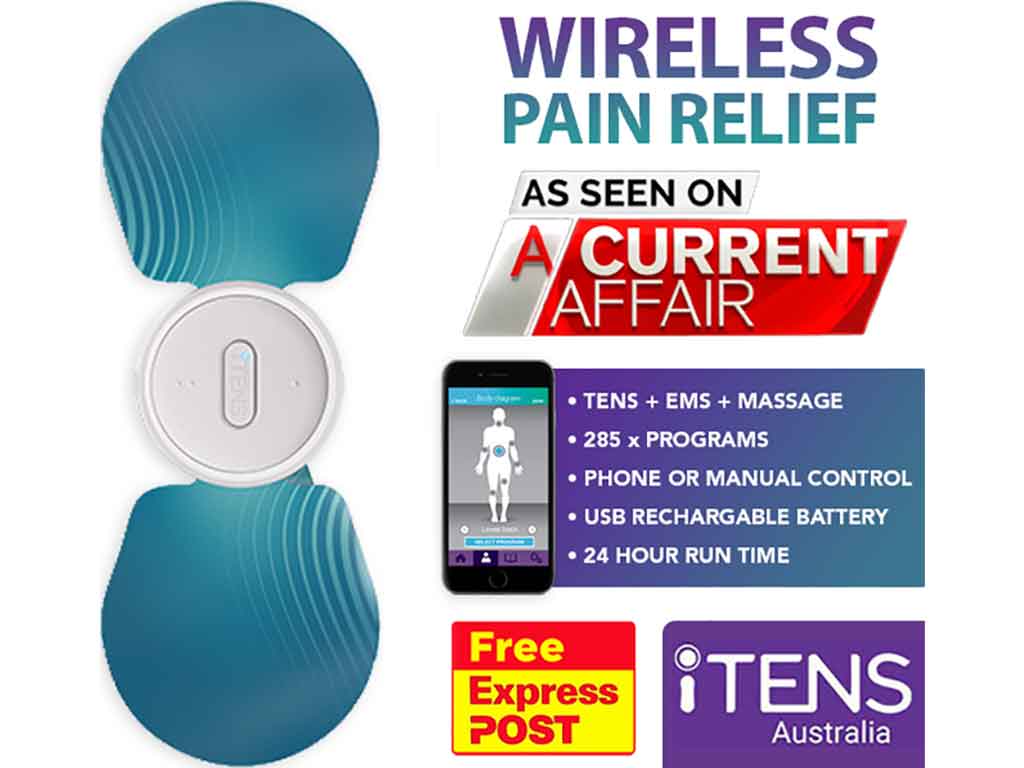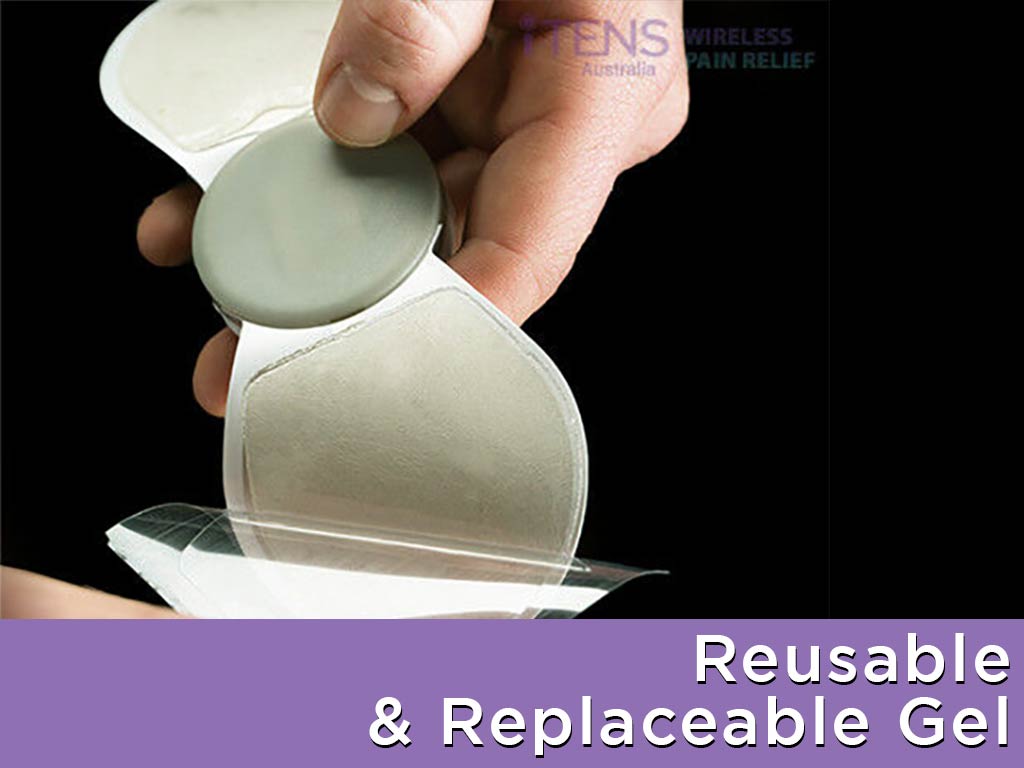
Transcutaneous Electrical Nerve Stimulation (TENS) device is a helpful tool for individuals suffering from various types of pain, including hip labral tear. When using a TENS unit for hip labral tear, it is essential to start with clean and dry skin. Then, turn on the unit and place the electrode patches near the affected area. After that, adjust the settings based on personal preference and comfort level. It is advisable to replace the pads if they become worn out.
The hip labrum, a circular band of cartilage encircling the hip joint socket, is vital for stabilising and cushioning the joint. It ensures the femoral head remains firmly in place within the socket. When this labrum tears, it can lead to various complications. Fortunately, people may opt for TENS as an alternative to surgical procedures or pain medicines. This article provides more information about a TENS device for hip labral tears, including how it works and proper usage.
What is a TENS Unit for Hip Labral Tear?
A hip labral tear occurs when the cartilage surrounding the hip joint, known as the hip labrum, is damaged. This can happen due to various reasons like repetitive motion, femoroacetabular impingement, or sudden injuries. When this tear occurs, it can lead to pain in the hip joint, affecting the ability of the person to perform daily activities comfortably. Sometimes, it may also result in joint instability and reduced range of motion, making movements challenging.
Healthcare providers often recommend conservative treatment before considering surgical interventions like labral repair. One such treatment is using a TENS unit for hip labral tear. This device delivers mild electrical impulses through electrodes placed on the skin, targeting the nerves in the affected area.
Incorporating TENS therapy into a comprehensive hip labral treatment plan can be beneficial. Alongside physical therapy, manual therapy, cold therapy, regenerative injection therapy and an exercise program, TENS can enhance pain relief and facilitate better participation in rehabilitation exercises. By reducing pain levels, patients may find it easier to engage in activities that promote healing and regain hip function.
Causes of Hip Labral Tear
- Femoral head misalignment and hip impingement.
- Repetitive movements or trauma can damage labral tissue.
- Misalignment in the ball-and-socket joint.
- Hip instability may lead to labral injury.
- Certain patient populations, like athletes or dancers, are at a higher risk due to high-impact activities.
- Aging compromises the integrity of the labral tissue.
- Damage to the labrum can affect the articular cartilage.
- Structural abnormalities in the hip joint.
- Poor biomechanics or muscle imbalances can place undue stress on the labrum.
- Untreated hip conditions such as hip dysplasia.
- Inflammatory conditions may weaken the labrum.
- Prior hip surgeries, including arthroscopic hip surgery, hip labrum surgery, or labral debridement.

How a TENS Unit for Hip Labral Tear Works
A TENS unit for hip labral tear works by blocking pain signals. Mild electrical pulses from the device interfere with the ability of the nerves to transmit pain messages to the brain. This means less discomfort for the patient, allowing them to engage in daily activities more efficiently.
Moreover, the TENS unit triggers the release of endorphins, the natural painkillers of the body. Endorphins alleviate discomfort and promote a sense of well-being and relaxation. By encouraging the body to produce its own pain relief, the TENS unit offers a drug-free alternative for managing chronic hip pain in patients with labral tears.
Furthermore, TENS therapy can boost blood circulation in the affected area. Improved blood flow aids in soft tissue regeneration, potentially speeding up the healing process for cartilage injuries. It also supports biomechanical function, leading to improved walking ability and reduced levels of pain. By incorporating TENS therapy into conservative management plans, healthcare providers can offer patients with hip pain a non-invasive option to alleviate persistent pain.
Benefits of TENS Therapy
TENS therapy offers therapeutic benefits for patients with tears in the hip labral. Firstly, it provides relief from severe pain, reducing the need for pain medications, injection techniques or even surgical procedures. By stimulating the nerves around the hip joint, TENS therapy helps manage pain levels effectively, allowing people to maintain their functional ability.
Moreover, TENS therapy contributes to a successful outcome by addressing both physical and psychological symptoms. Joint instability can be alleviated through TENS, particularly in movements like external rotation. Furthermore, it aids in managing psychological symptoms such as anxiety and frustration that may arise from continued pain.

How to Use a TENS Unit for Hip Labral Tear
Operating a TENS unit for hip labral tear is a straightforward process. Begin by ensuring the TENS device has fresh batteries or enough power. Next, attach the electrodes to the skin surrounding the hip area. Proper electrode placement helps ensure TENS can target the affected area effectively. This step is crucial for maximising the TENS pain therapy usage.
The recommended duration for TENS therapy is between 15 to 30 minutes per session, up to three times a day. However, it is essential to follow the guidance of a healthcare professional or physical therapist when using TENS therapy for hip labral tears. Overusing the TENS unit or misusing it may lead to adverse outcomes such as soft tissue damage and skin irritation.
Additionally, users may use TENS therapy in combination with other conservative treatments, such as physical therapy exercises, to enhance hip function and promote recovery from cartilage injuries. By incorporating TENS therapy into their treatment plan, individuals with hip labral tears can improve their exercise ability and overall quality of life.
Where to Place the Pads?
It is essential to clean and dry the treatment area first. Then, place one electrode pad on the front of the hip. Place the second electrode pad on the back of the hip to cover the entire affected area. The pads should be at least one inch apart to prevent overlapping of the electrical currents.
Electrode pads have a lifespan. It is recommended to replace them regularly to ensure safe and effective use. As such, the life expectancy of the patches can vary depending on the quality of the material. Generally, it can last up to 20 to 30 applications.
Conclusion
In conclusion, using a TENS unit for hip labral tear can be helpful. It works by sending gentle electric pulses to nerves, reducing pain signals to the brain. This helps patients feel better and do more activities. Also, it triggers the body to release natural painkillers, called endorphins, which can make people feel relaxed. Plus, it boosts blood flow to the injured area, helping it heal faster.
To use a TENS unit, start by placing the electrodes on clean, dry skin around the hip. Follow recommended usage guidelines, typically 15 to 30 minutes per session, up to three times daily. Additionally, replace electrode pads regularly for safe and effective use, typically after 20 to 30 applications. Using TENS therapy alongside other treatments like physical therapy can improve hip function and recovery. People interested in wireless TENS devices may check iTENS Australia.







